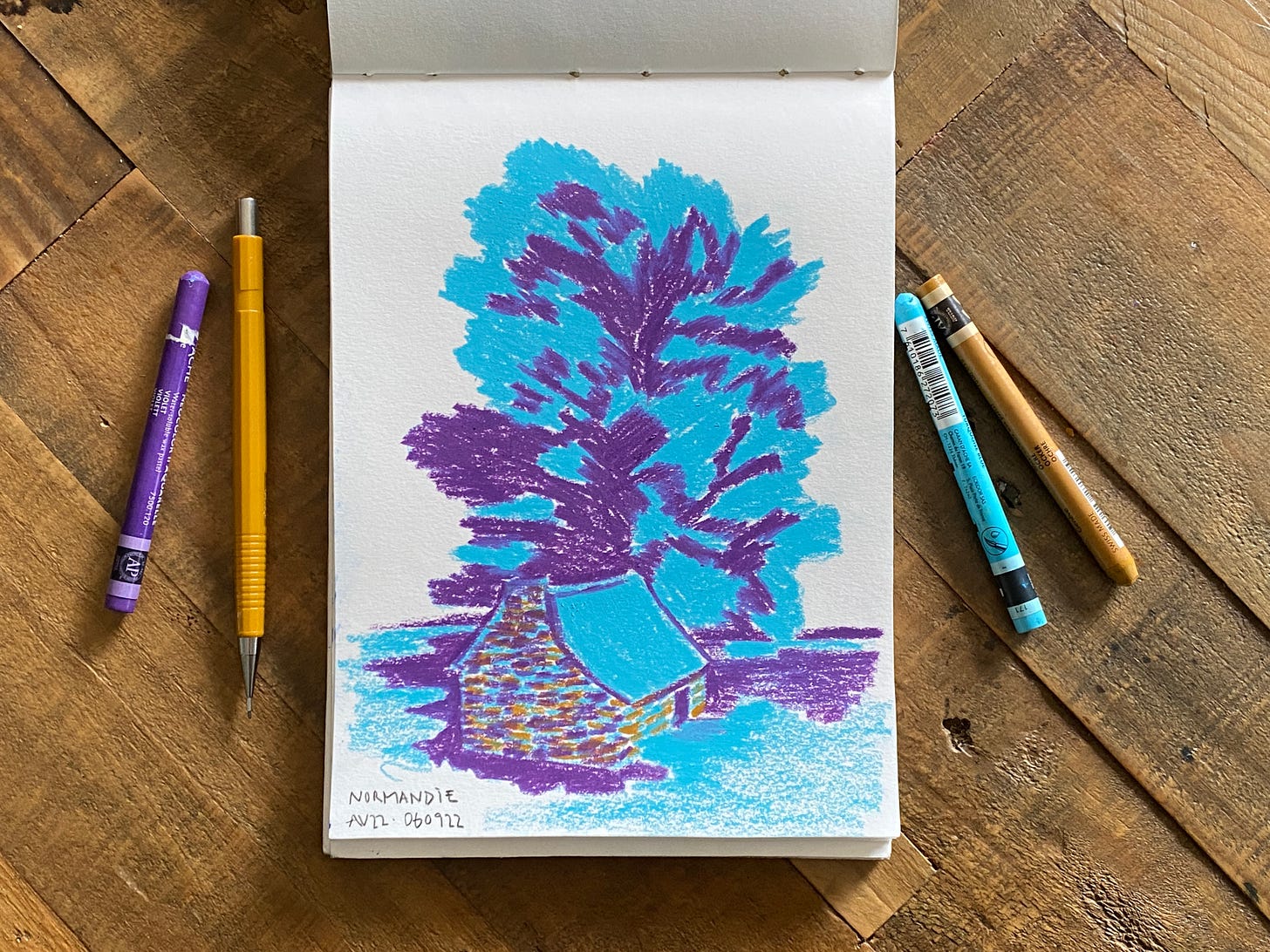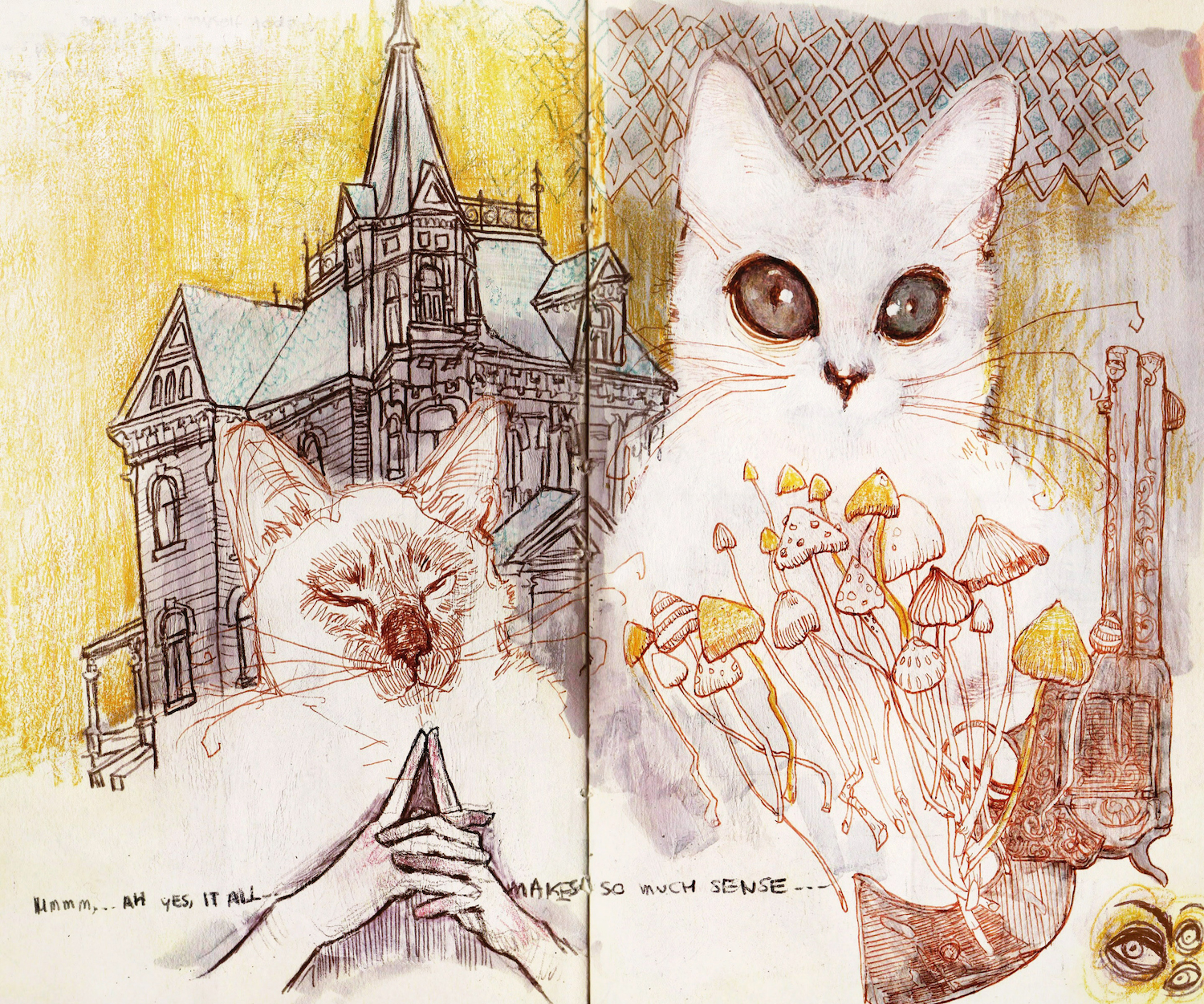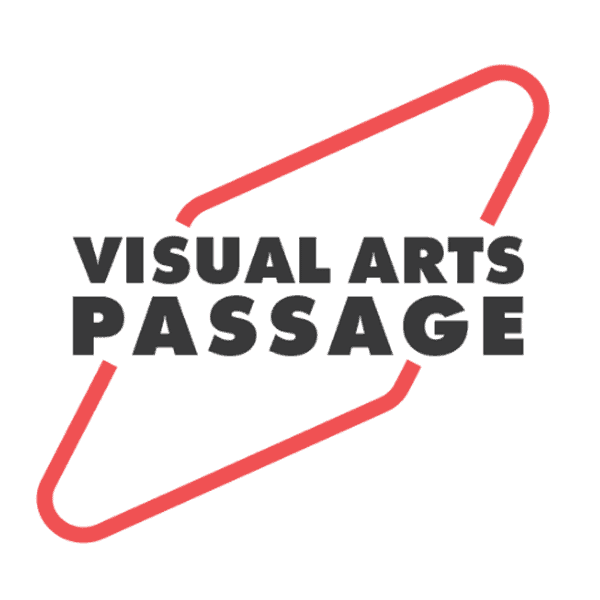Lost in Sketchbook No-Man’s-Land: Drawing Exercises to Help Boost your Skill & Imagination
Drawing isn’t part of everyone’s process. But when you find a regular practice or daily drawing exercises that work for you, it has the potential to seriously boost your skill & imagination, getting you closer to discovering your unique artistic voice.

Illustrator Sterling Hundley shows his pro-status in his chaotic sketchbook pages.
The Best Drawing Exercises to Build a Solid Foundation
Artist & Mentor John English always praises the virtues of doing your art pushups and situps in our classes. Here are a few ways to get in those daily art and design reps.
Focusing on Shapes: Envelopes
Breaking your subject down into its basic shapes helps you focus on what is essential about the subject, without fussing over details and rendering. A fantastic way to tackle this is to use an envelope. James Gurney covers this one in his blog, but the basic idea is to imagine an outside shape “enveloping” your subject, and think carefully about the proportions inside.
Too often as beginners we start with the fun part of our subject, or whatever detail takes your focus, and realize too late that our drawing is going to run off the page. Or conversely, you’ve drawn a thing so small that your hand starts cramping, carving out those tiny details. This drawing exercise will help train your eyes to see the subject as a whole, complete shape before you can hone in on one detail.

The “drawing envelope,” as described in Drawing Made Easy
Focusing on Shapes: Silhouettes
If you can, try and do this next exercise from memory. Otherwise, grab an object. We’re going to focus on the silhouette. As if it was backlit, describe the shape of this thing. Don’t shade, don’t render, don’t even try to outline–instead, grab a black marker or a thick ink pen or pencil and focus on just recreating the silhouette of this thing, exactly how it appears to you. Got it? Okay! Now change the angle, and do it ten more times!
Not only does this exercise help build your “visual library” of all the things you can draw from memory, it also encourages you to identify the most recognizable silhouette of any object. Illustration is a communication business, and when you’re communicating with your audience using the most effective silhouette of an object, person, etc; it’s like broadcasting your intended message on a loudspeaker.
Bonus points: review your silhouettes, and pick the 1-2 you feel best describe the subject.

Illustrator Edward Kinsella is a household name around here. I’m always struck by his ability to render flawless silhouettes.
Focusing on Lines: Contours
Contour Drawing is a fundamental drawing exercise that most students will stumble across in their 101 class. It’s like hiking…with your eyes. Bear with me here. You’re going to follow the contour, or outline, of your subject — but the kicker is, you can’t lift up your drawing implement, OR look down at your page – just stay on the trail!! Follow that contour throughout the whole form, moving slowly to capture the changes in the form. Just like when you’re hiking, you might need to slow down at certain sections and explore more intently. While this exercise can quickly become the bane of your existence, I suggest finding a subject you’re actually interested in, and will enjoy staring at for some time.

Even David Hockney did his contour drawing pushups & sit-ups
Focusing on Lines: Mark-making
Sometimes the breakthrough you need in your artistic voice involves changing your tools, or using those tools in an unexpected way. While these first few exercises might’ve required some brain power, this one is pure play. For this exercise, grab a large sheet of kraft paper, newsprint, whatever — just make sure it’s big, preferably big enough to stand in front of. Hang it up on the wall, begin by putting pencil (or pen, or paintbrush) to paper, and start moving. Your goal is not to make a straight line, but to vary the stroke, pressure, and angle of your brush, pen, or pencil. Make it light, make it zigzag; explore the whole blank page. While the goal here is not necessarily to develop a new technique or style from what you’ve drawn, you might discover a way of using a tool that you hadn’t thought of. More importantly, inviting play into your drawing exercise should always be a priority.
Bonus points: listen to some music while drawing a continuous line, and make the line ‘dance’ to the music.

Here’s another great idea from Kingsley art – practice making different textures and patterns with your lines.
Fundamentals: Gesture drawing
Gesture drawing is another helpful drawing exercise that improves your hand-eye coordination while you record energy and movement. Drawing from observation, your goal is to practice capturing the gesture of an animated form–figure, animal, etc–as concisely and elegantly as you can. There are endless amazing in-depth resources available on the web. Some other great resources online to help you practice are Line of Action & Quick Poses, both model generators with a timer. Experiment with different tools to find what works best for you, and keep each gesture to a quick sketch. Turn on some music, zone out, set a timer for each pose, and have at it!
Fundamentals: Using Constraints
I find that one of the biggest hurdles to overcome when sketching is just figuring out what to draw. This is where constraints come in — a simple way of limiting the choices your brain has to make. An example of a constraint could be:
- Setting a time limit for each drawing to help stay motivated and focused
- Choosing just one new tool, one color to draw with
- Keeping a hat full of all your favorite words, genres, subjects, etc; and pulling a topic out when you need a little inspiration
Limiting yourself can jumpstart your engine, which for many of us creatives, is not always so easy as putting the keys in the ignition! When you’re feeling stuck, uninspired, or overwhelmed by all the options, try giving yourself a constraint to get started. Here’s a more in-depth guide from The Sketch Club on what your constraints might look like.

Just the basics, from The Sketch Club
Staying Motivated and Consistent
Creating a daily drawing habit, focusing on what you love, and finding community to draw with can all boost your consistency & motivation
Draw Daily – or as often as you see fit
We all know creating new habits can feel overwhelming and frustrating. Consistency in your sketchbook doesn’t have to happen daily, but if it’s consistency you’re after, you should identify a realistic interval where you know you’re most likely to show up. Maybe you start attending a weekly life drawing session, or stop in your favorite cafe every Monday a sketch for a while. Maybe you’re someone who thrives on external accountability, and decide to facetime with a fellow creative on the regular to draw together. There is no right or wrong here, the key is just finding the space where a sketching can fit in.
Plenty of artists will do some “warm-up” drawing exercise before launching into their work for the day, and this not only helps strengthen the neural pathway for what your brain & hands are about to do — it physically warms up your hands, minor muscles, joints & ligaments, helping you loosen up and be more expressive with your marks.

Drawing challenges, like the ever-popular Inktober, can be a motivating way to stay accountable.
Keep it Interesting
Some of the best advice I recieved from a teacher was to stick with drawing what I love. I know it sounds simple – but especially in the age of social media, it’s easy to get buried under the laundry list of drawing skills you think you need to learn, or keep remixing the same subject. Staying motivated & consistent is about 1000% easier when you’re engaging with subjects you already love, are curious about, or just can’t get enough of. Whether you want to sketch people at a cafe, do a deep dive on ceremonial masks of the 3rd century, or put your own twist on that one animator’s OC, you should focus sketching things you’re actually excited about.

I credit Audrey Benjaminsen for the “keep it interesting” rule – here’s an artist who excels at drawing what she enjoys.
Find Communities for Drawing Practice
There are a few reasons why drawing with other people is a must. I already mentioned the accountability piece, how keeping regular dates with others can help grow your consistency. But besides that, drawing with others gives you the benefit of learning from others, recieving helpful critiques, and being exposed to different drawing styles. At Visual Arts Passage’s Thursday night Drawing Hive, we get to review everyone’s work at the end of the night. Every week there are fresh, fun, new reference photos to draw from, and no two submissions ever look alike. I, for one, have discoverd a treasure trove of new materials, skills, and ideas for drawings and exercises through Drawing Hive. It’s a great opportunitity to push yourself to experiment every week, with no strings attached.
You can join us every Thursday at 7 pm ET for this awesome free session: https://visualartspassage.com/drawing-hive/
Developing Muscle Memory with Drawing Exercises
Remember that learning a new skill takes time, and honing that skill takes repetition.
Repetition in your drawing practice gives you more control over what you create. In just a few months or weeks of doing these exercises, you’ll notice your brain-muscle connection improving. If any one drawing exercise has inspired you to put pencil to paper today, that’s awesome. And if not, maybe by process of elimination you’ve gotten just a bit closer to finding a rhythm that suits you best. Above all, I hope your takeaway is that drawing should be, first and foremost, fun — inspiring, life-giving, playful. While your regular practice can sometimes feel like drudgery, reminding yourself to make the process thrilling will jumpstart your creativity.
